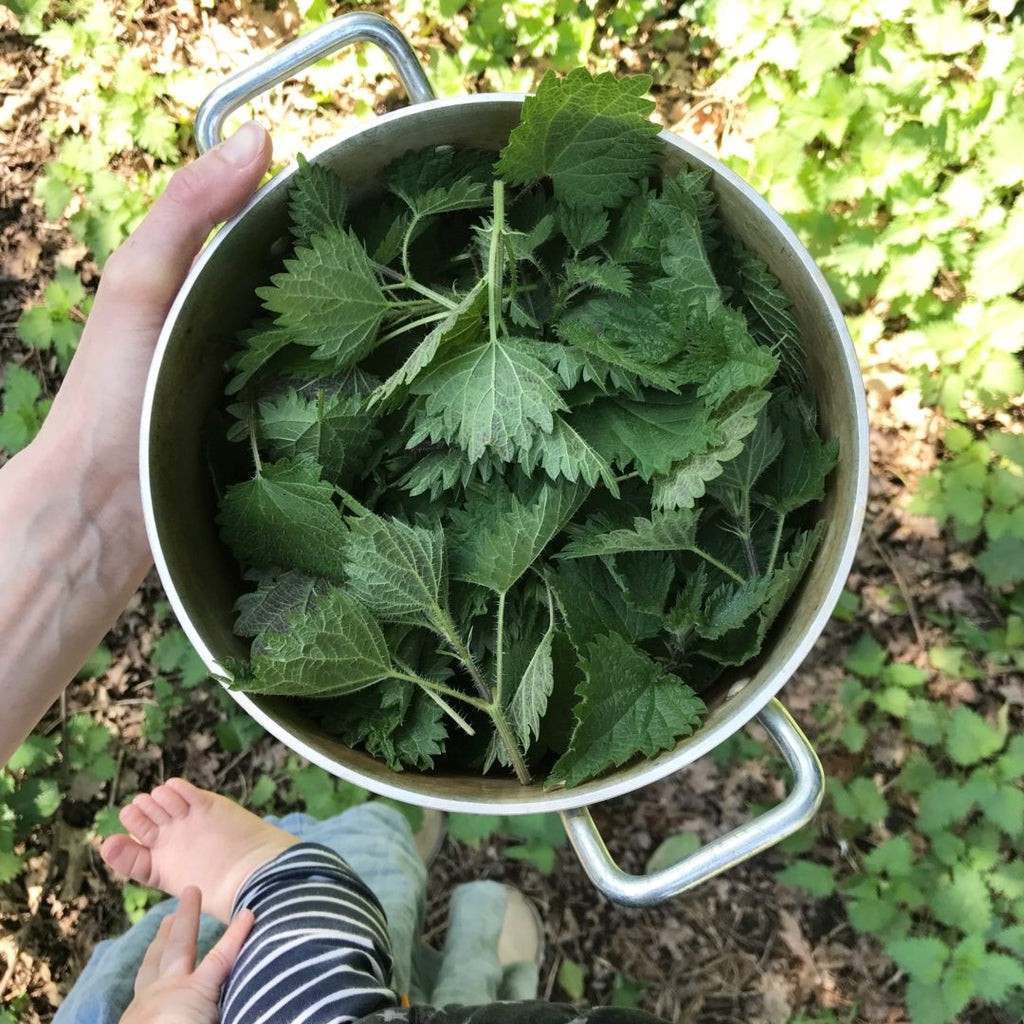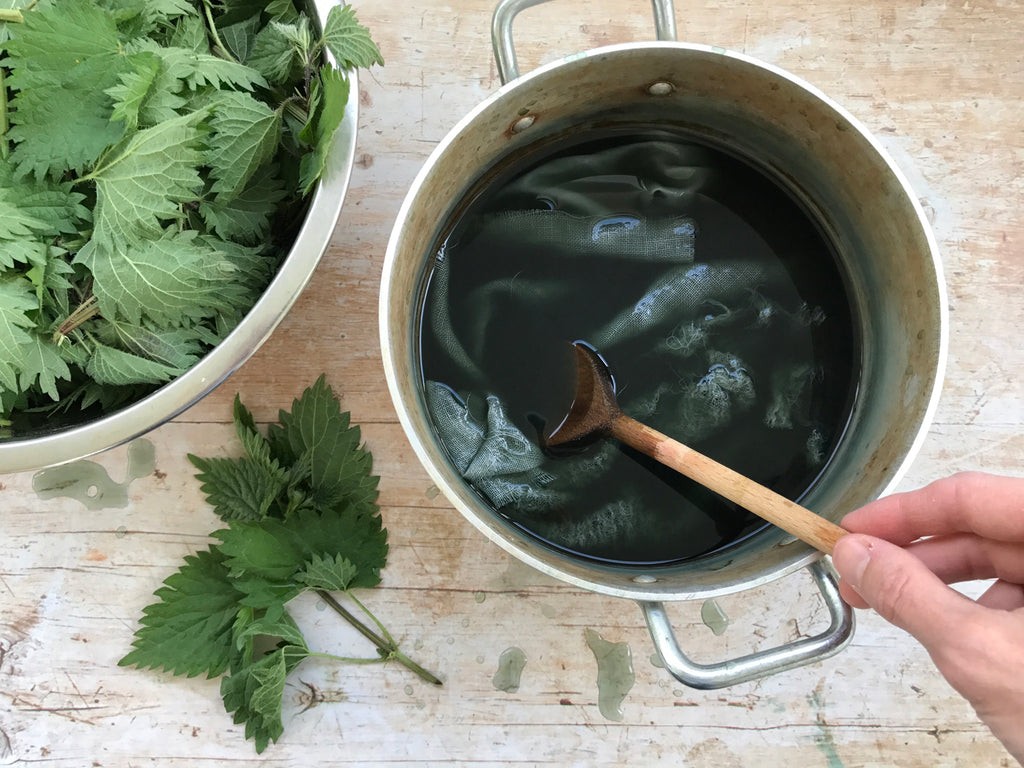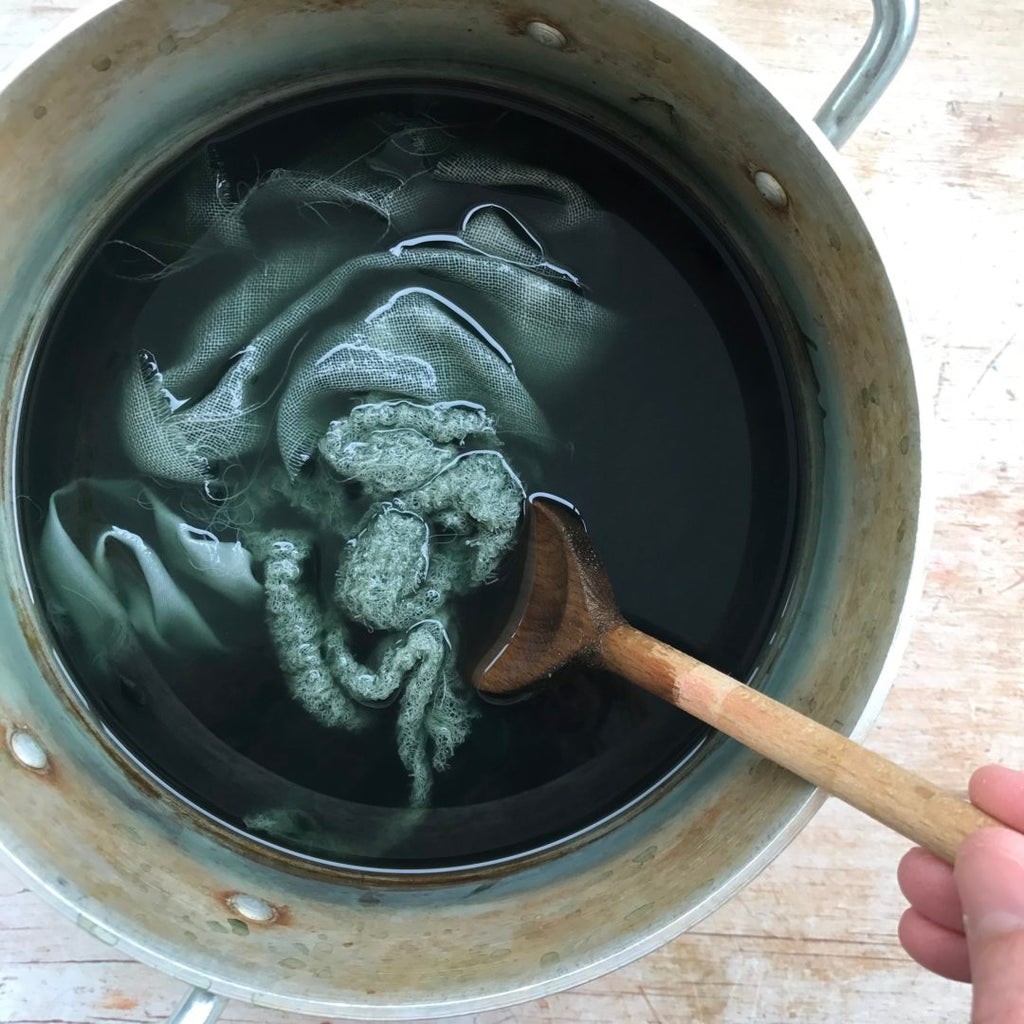Are you curious about textile dyeing and eager to witness the magic firsthand during your Vietnam trip? At SIXT.VN, we understand your desire for authentic cultural experiences. This guide will explore the possibilities of observing textile dyeing in Vietnam and how SIXT.VN can enhance your journey with seamless travel solutions. Discover vibrant local crafts, dyeing methods, and how to incorporate textile experiences into your unforgettable Vietnam adventure. Let SIXT.VN be your partner in uncovering the rich cultural heritage of Vietnam, from convenient airport transfers to curated tours.
1. What is Textile Dyeing and Why is it Important?
Textile dyeing is the art and science of adding color to fabrics and yarns. This process is vital because it transforms raw, often plain materials into vibrant and expressive textiles used in clothing, home decor, and various artistic creations.
The Cultural Significance of Textile Dyeing:
Textile dyeing carries immense cultural significance, especially in places like Vietnam, where traditional methods have been passed down through generations. These techniques often use natural dyes derived from plants, insects, and minerals, reflecting a deep connection to the environment and local heritage. The colors and patterns can signify social status, regional identity, and even spiritual beliefs. Understanding and preserving these traditions is crucial for maintaining cultural diversity and supporting local communities. Exploring textile dyeing offers a window into the soul of a culture, revealing its history, values, and artistic expressions.
2. Can I Observe Textile Dyeing in Vietnam?
Yes, you absolutely can observe textile dyeing in Vietnam! Several regions are renowned for their traditional dyeing practices, offering tourists unique opportunities to witness this art form firsthand.
2.1. Popular Locations for Textile Dyeing Observation
- Hoi An: Known for its tailor shops, Hoi An also has workshops where you can see traditional dyeing methods, including tie-dye and batik.
- Sapa: Home to various ethnic minority groups, Sapa offers chances to observe indigo dyeing, a technique deeply rooted in the local culture.
- My Tho: In the Mekong Delta, you can find workshops specializing in natural dyes made from local plants.
- Ninh Binh: Explore the dyeing techniques used in traditional silk weaving villages, offering a glimpse into the intricate processes.
2.2. Types of Dyeing Processes You Might See
- Natural Dyeing: This involves using dyes derived from plants (like indigo, turmeric, and mangrove bark), insects (like cochineal), and minerals. The process is eco-friendly and produces unique, subtle colors.
- Indigo Dyeing: A specific type of natural dyeing using the indigo plant. The process involves multiple dips in the dye bath to achieve the desired shade of blue, a common practice among ethnic minorities in Vietnam.
- Batik: This wax-resist dyeing technique involves applying wax to certain areas of the fabric to prevent dye from penetrating. The result is intricate patterns and designs.
- Tie-Dye: A resist dyeing method where fabric is tied, stitched, or folded to create patterns when dyed. This is a popular and accessible technique often seen in workshops.
- Modern Dyeing: While traditional methods are fascinating, some workshops also incorporate modern dyeing techniques using synthetic dyes for efficiency and color variety.
3. Where Can I Find Textile Dyeing Workshops in Vietnam?
Finding the right workshop allows for an enriching and educational experience.
3.1. Recommended Workshops in Hoi An
Hoi An is famous for its tailoring and traditional crafts. Here are some workshops where you can observe and even participate in textile dyeing:
- Reaching Out Arts & Crafts: This social enterprise provides opportunities to observe silk weaving and dyeing techniques, employing artisans with disabilities.
- Hoi An Handicraft Workshop: Offers demonstrations of traditional crafts, including textile dyeing, with the option to create your own dyed products.
- Yaly Couture: While primarily a tailoring shop, Yaly sometimes offers insights into the dyeing process used for their custom fabrics.
3.2. Textile Villages in Sapa
Sapa is home to several ethnic minority villages where traditional dyeing practices are still alive:
- Cat Cat Village: Here, the Black Hmong people practice indigo dyeing. You can observe the dyeing process and purchase handmade indigo-dyed textiles.
- Lao Chai Village: Another village where you can witness traditional indigo dyeing, offering stunning views of the Muong Hoa valley.
- Ta Phin Village: Known for its Red Dao community, this village offers insights into the unique embroidery and dyeing techniques used in their traditional clothing.
3.3. Natural Dyeing Experiences in the Mekong Delta
The Mekong Delta offers unique opportunities to see how natural dyes are made from local plants:
- Local Workshops in My Tho: Several small workshops in My Tho specialize in creating dyes from plants like the mangrove tree. You can visit these workshops to see the dyeing process and learn about the natural resources used.
- Craft Villages near Can Tho: Explore craft villages that use natural dyes to color silk and cotton fabrics, offering a glimpse into the region’s rich textile heritage.
4. How to Arrange a Visit to a Textile Dyeing Workshop Through SIXT.VN
Planning a trip to Vietnam can be overwhelming, but SIXT.VN simplifies the process with tailored services to enhance your experience.
4.1. Customized Tour Packages
SIXT.VN offers customized tour packages that include visits to textile dyeing workshops. These packages are designed to immerse you in the local culture and provide a hassle-free experience.
- Cultural Immersion Tours: These tours focus on showcasing Vietnam’s rich cultural heritage, including textile dyeing, traditional music, and local cuisine.
- Artisan Village Tours: Designed to explore the craft villages of Vietnam, these tours include visits to textile workshops, pottery studios, and wood carving shops.
- Eco-Friendly Tours: These tours highlight sustainable tourism practices, including visits to workshops that use natural dyes and support local communities.
4.2. Transportation and Accommodation Assistance
SIXT.VN provides comprehensive support for your travel needs, including:
- Airport Transfers: Ensure a smooth start and end to your trip with reliable airport transfer services.
- Hotel Bookings: Choose from a wide range of accommodations to suit your budget and preferences.
- Local Transportation: Arrange for private cars, taxis, or motorbike rentals to explore Vietnam at your own pace.
4.3. Booking a Tour with SIXT.VN
Booking a tour is easy. Follow these steps:
- Visit SIXT.VN: Browse our website to explore available tour packages and services.
- Contact Us: Reach out via phone or WhatsApp at +84 986 244 358 or visit our office at 260 Cau Giay, Hanoi, Vietnam.
- Customize Your Tour: Work with our travel experts to create a personalized itinerary that includes visits to textile dyeing workshops and other attractions.
- Confirm Your Booking: Review your itinerary and confirm your booking with secure payment options.
5. What Should I Expect During a Textile Dyeing Workshop Visit?
Understanding what to expect can help you prepare for a more enriching experience.
5.1. Typical Activities
- Demonstrations: Watch skilled artisans demonstrate the various stages of the dyeing process, from preparing the dyes to applying them to the fabric.
- Hands-On Experiences: Some workshops offer the opportunity to participate in the dyeing process, allowing you to create your own dyed products.
- Cultural Exchange: Engage with local artisans, learn about their traditions, and understand the cultural significance of textile dyeing.
- Shopping: Purchase handmade textiles and other crafts directly from the artisans, supporting their livelihoods and taking home unique souvenirs.
5.2. Etiquette and Respect
- Ask Permission: Always ask for permission before taking photos or videos of the artisans and their work.
- Be Respectful: Show respect for the local culture and traditions by dressing modestly and behaving appropriately.
- Support Local Businesses: Purchase products directly from the artisans to support their livelihoods and help preserve their craft.
- Engage Politely: Engage with the artisans politely, showing genuine interest in their work and asking thoughtful questions.
6. What are the Environmental Considerations of Textile Dyeing?
The environmental impact of textile dyeing is an important consideration, especially when choosing workshops to visit.
6.1. Natural vs. Synthetic Dyes
- Natural Dyes: These dyes are derived from natural sources and are generally more environmentally friendly than synthetic dyes. They are biodegradable and do not produce harmful chemicals.
- Synthetic Dyes: These dyes are chemically synthesized and can release pollutants into the environment. Some synthetic dyes are also allergenic and can cause skin irritation.
6.2. Sustainable Practices
- Water Conservation: Look for workshops that use water-efficient dyeing techniques and recycle water whenever possible.
- Waste Management: Choose workshops that properly dispose of waste and minimize their environmental impact.
- Eco-Friendly Materials: Support workshops that use organic cotton, hemp, and other sustainable materials.
6.3. Responsible Tourism
- Choose Eco-Conscious Workshops: Select workshops that prioritize sustainability and environmental responsibility.
- Support Local Communities: By purchasing products directly from artisans, you can help support their livelihoods and preserve their traditions.
- Minimize Your Impact: Be mindful of your environmental footprint by reducing waste, conserving water, and respecting the local environment.
7. What are the Health Considerations for Observing the Dyeing Process?
Observing the dyeing process can pose certain health risks, so it’s important to take precautions.
7.1. Potential Hazards
- Chemical Exposure: Synthetic dyes can release harmful chemicals into the air, posing a risk of respiratory irritation and other health problems.
- Allergies: Some dyes can cause allergic reactions, especially if you have sensitive skin.
- Heat and Humidity: Dyeing workshops can be hot and humid, increasing the risk of heatstroke and dehydration.
7.2. Safety Measures
- Ventilation: Ensure that the workshop is well-ventilated to minimize exposure to harmful chemicals.
- Protective Gear: Wear gloves, masks, and other protective gear to prevent skin irritation and respiratory problems.
- Hydration: Drink plenty of water to stay hydrated, especially in hot and humid conditions.
7.3. Health Tips
- Consult a Doctor: If you have any underlying health conditions, consult a doctor before visiting a dyeing workshop.
- Stay Informed: Learn about the potential health risks associated with textile dyeing and take appropriate precautions.
- Listen to Your Body: If you start feeling unwell, take a break and seek medical attention if necessary.
8. What Cultural Insights Can I Gain from Watching Textile Dyeing?
Watching textile dyeing offers profound cultural insights into Vietnamese traditions and values.
8.1. Traditional Techniques
- Ancient Methods: Witness the ancient dyeing techniques passed down through generations, preserving the cultural heritage of Vietnam.
- Local Materials: Discover the use of local materials such as plants, insects, and minerals, reflecting the deep connection between the community and its environment.
- Unique Designs: Observe the creation of unique designs and patterns that represent the cultural identity of different regions and ethnic groups.
8.2. Social and Economic Impact
- Community Empowerment: See how textile dyeing empowers local communities, providing economic opportunities and preserving traditional skills.
- Cultural Preservation: Understand the role of textile dyeing in preserving the cultural identity of ethnic minority groups, promoting cultural diversity and inclusion.
- Sustainable Livelihoods: Learn how sustainable dyeing practices support livelihoods while minimizing environmental impact.
8.3. Artistic and Aesthetic Appreciation
- Color Symbolism: Explore the symbolism of different colors and patterns, understanding their cultural and historical significance.
- Artistic Expression: Appreciate the artistic expression and creativity involved in textile dyeing, recognizing the skill and dedication of the artisans.
- Visual Storytelling: Discover how textiles tell stories, conveying cultural narratives and historical events through intricate designs and patterns.
9. Are There Any Ethical Considerations When Visiting Textile Workshops?
Visiting textile workshops comes with ethical responsibilities to ensure that your presence benefits the local community.
9.1. Fair Trade Practices
- Support Fair Wages: Choose workshops that pay fair wages to their artisans, ensuring they receive a living wage for their work.
- Promote Safe Working Conditions: Support workshops that provide safe and healthy working conditions for their employees.
- Avoid Exploitation: Be aware of potential exploitation and choose workshops that treat their artisans with respect and dignity.
9.2. Community Benefits
- Support Local Economies: Purchase products directly from the artisans to support local economies and promote sustainable development.
- Empower Women: Choose workshops that empower women, providing them with economic opportunities and promoting gender equality.
- Invest in Education: Support workshops that invest in education and training, helping to preserve traditional skills and create future opportunities.
9.3. Responsible Purchasing
- Buy Directly from Artisans: Purchase products directly from the artisans whenever possible, cutting out middlemen and ensuring they receive a fair price.
- Negotiate Respectfully: Negotiate prices respectfully, recognizing the value of the artisans’ work and the cost of materials.
- Avoid Bargaining Excessively: Avoid bargaining excessively, as this can devalue the artisans’ work and undermine their livelihoods.
10. What Other Activities Can I Combine With My Textile Dyeing Visit?
Enhance your Vietnam experience by combining your textile dyeing visit with other exciting activities.
10.1. Cultural Tours
- Hoi An Ancient Town: Explore the historic streets of Hoi An, a UNESCO World Heritage Site, and discover its unique blend of Vietnamese, Chinese, and Japanese architecture.
- My Son Sanctuary: Visit the ancient ruins of My Son, a UNESCO World Heritage Site, and learn about the Champa civilization.
- Hanoi Old Quarter: Wander through the bustling streets of Hanoi’s Old Quarter, sampling local cuisine and experiencing the vibrant atmosphere.
10.2. Nature and Adventure
- Ha Long Bay: Cruise through the stunning limestone karsts of Ha Long Bay, a UNESCO World Heritage Site, and enjoy kayaking, swimming, and hiking.
- Sapa Trekking: Embark on a trekking adventure through the rice terraces of Sapa, experiencing the natural beauty of the region and meeting local ethnic minority communities.
- Phong Nha-Ke Bang National Park: Explore the caves and jungles of Phong Nha-Ke Bang National Park, a UNESCO World Heritage Site, and discover its unique biodiversity.
10.3. Culinary Experiences
- Cooking Classes: Take a cooking class and learn to prepare traditional Vietnamese dishes, using fresh local ingredients.
- Street Food Tours: Explore the vibrant street food scene in Hanoi, Hoi An, and Ho Chi Minh City, sampling local delicacies and experiencing the culinary culture.
- Market Visits: Visit local markets and discover the diverse array of fresh produce, spices, and other ingredients used in Vietnamese cuisine.
FAQ Section
1. Is it safe to visit textile dyeing workshops in Vietnam?
Yes, most workshops are safe, but it’s important to take precautions like wearing protective gear and ensuring good ventilation.
2. Can I participate in the dyeing process?
Some workshops offer hands-on experiences, allowing you to dye your own fabrics. Check with the workshop beforehand.
3. What is the best time to visit Vietnam for textile dyeing?
The dry season (November to April) is generally the best time to visit, offering pleasant weather for outdoor activities.
4. How can SIXT.VN help me plan my trip to Vietnam?
SIXT.VN offers customized tour packages, transportation assistance, and hotel bookings to make your trip hassle-free.
5. Are natural dyes better than synthetic dyes?
Natural dyes are generally more environmentally friendly, but synthetic dyes can offer a wider range of colors and greater durability.
6. What should I wear when visiting a textile dyeing workshop?
Wear comfortable clothing that you don’t mind getting stained. Closed-toe shoes are recommended.
7. How long does a typical workshop visit last?
A typical visit can last from a few hours to a full day, depending on the activities offered.
8. Do I need to book in advance?
Booking in advance is recommended, especially during peak tourist season, to ensure availability.
9. Can I purchase textiles directly from the artisans?
Yes, most workshops have shops where you can purchase handmade textiles and support local artisans.
10. What languages are spoken at the workshops?
Vietnamese is the primary language, but some workshops may have English-speaking guides.
Visiting textile dyeing workshops in Vietnam offers a unique opportunity to witness traditional crafts, learn about local culture, and support sustainable tourism. With proper planning and respect for local customs, your experience can be both enriching and rewarding. Let SIXT.VN be your trusted partner in creating an unforgettable journey through Vietnam, filled with vibrant colors, rich traditions, and authentic experiences.
Address: 260 Cau Giay, Hanoi, Vietnam. Hotline/Whatsapp: +84 986 244 358. Website: SIXT.VN.
 Nettles Ready for Dyeing
Nettles Ready for Dyeing
 Dyeing Pot with Nettle Dye
Dyeing Pot with Nettle Dye
 Nettle Dye Bath
Nettle Dye Bath



